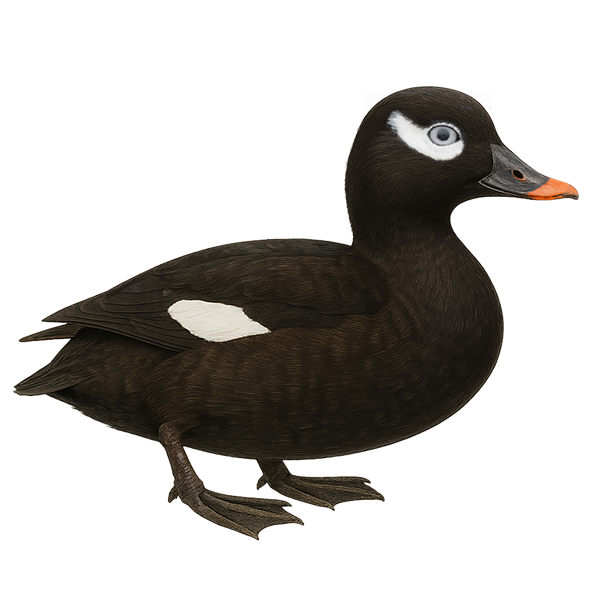Your wildlife photography guide.
Explore the white-winged scoter in detail, study its behavior, prepare your shots.
Where to observe and photograph the white-winged scoter in the wild
Learn where and when to spot the white-winged scoter in the wild, how to identify the species based on distinctive features, and what natural environments it inhabits. The WildlifePhotographer app offers tailored photography tips that reflect the white-winged scoter’s behavior, helping you capture better wildlife images. Explore the full species profile for key information including description, habitat, active periods, and approach techniques.
White-winged Scoter
Scientific name: Melanitta deglandi

IUCN Status: Least Concern
Family: ANATIDAE
Group: Birds
Sensitivity to human approach: Suspicious
Minimum approach distance: 30 m
Courtship display: May to July
Incubation: 26-29 jours
Hatchings: June to August
Habitat:
Coastal areas, lakes, rivers
Activity period :
Primarily active during the day, with peak activity in the morning and late afternoon.
Identification and description:
The White-winged Scoter, Melanitta deglandi, is a robust and elegant sea duck, recognizable by its dark plumage and distinctive white wing patches. Males display a black plumage with striking white marks on the wings and around the eyes, while females are browner with less contrasting patterns. They primarily inhabit North American coasts and large lakes, feeding on mollusks, crustaceans, and small fish. Their flight is fast and direct, often in tight groups. During the breeding season, they migrate to boreal regions where they nest near lakes and rivers. Their call is a soft whistle, often heard in flight.
Recommended lens:
400mm – adjust based on distance, desired framing (portrait or habitat), and approach conditions.
Photography tips:
To photograph the White-winged Scoter, choose early mornings or late afternoons for soft lighting. Use a 400mm or longer telephoto lens to capture detailed shots without disturbing the bird. Be patient and observe their flight and diving habits. In-flight shots can be spectacular, so be ready to track their swift movements. A tripod or monopod can be helpful to stabilize your camera, especially during long observation sessions.
The WildlifePhotographer App is coming soon!
Be the first to explore the best nature spots, track rutting seasons, log your observations, and observe more wildlife.
Already 1 431 wildlife lovers subscribed worldwide

